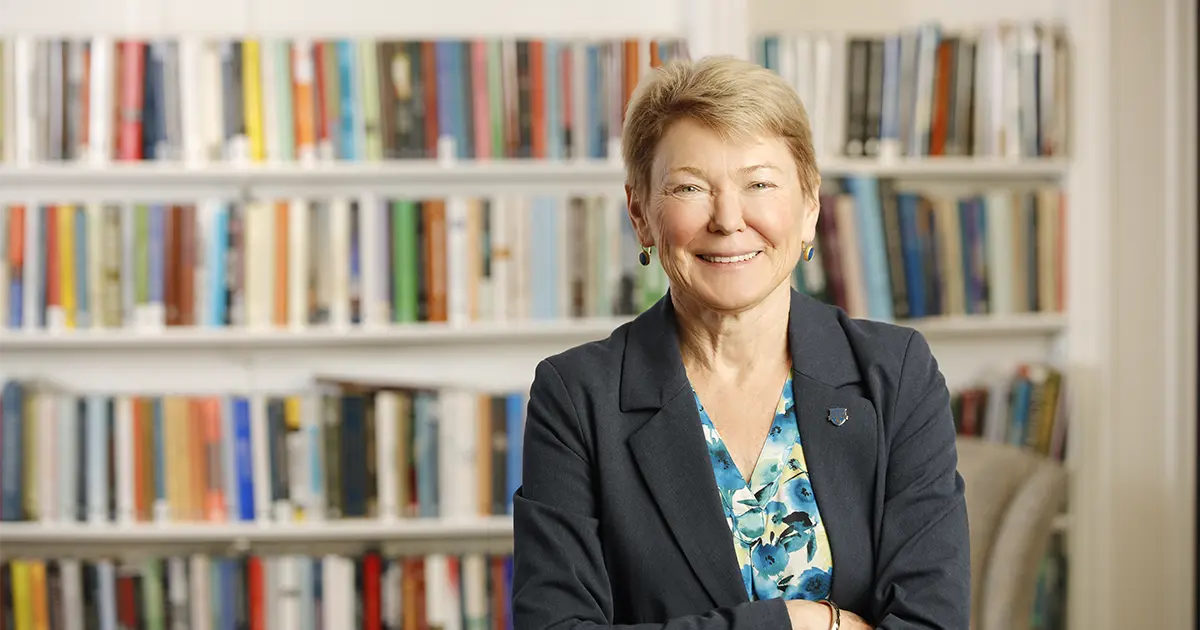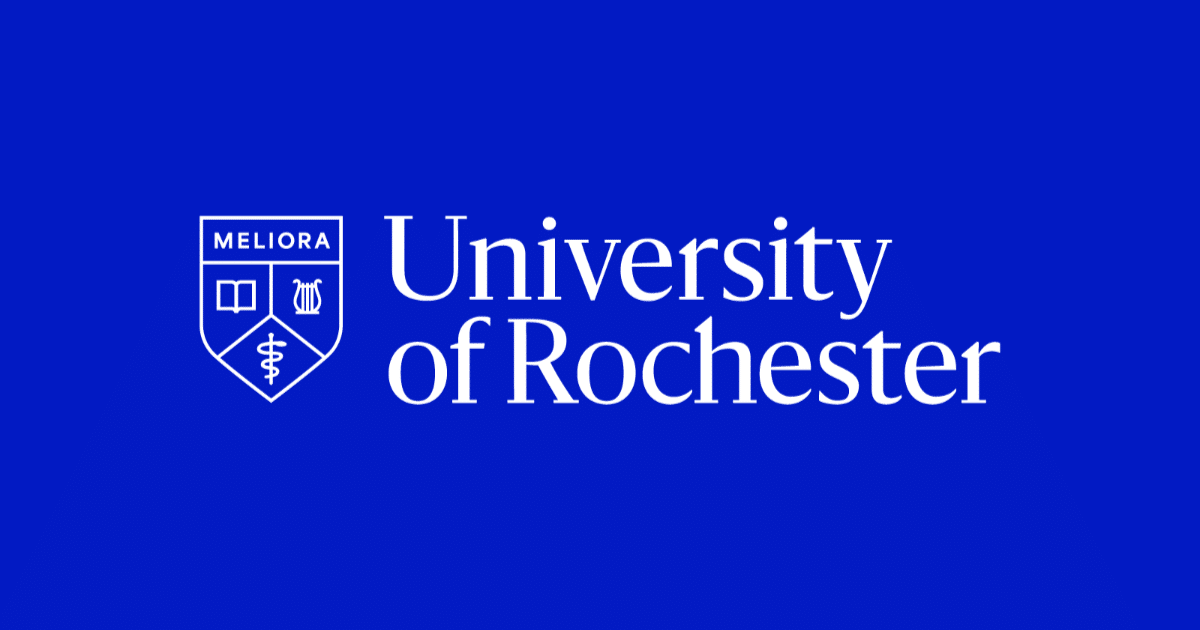Transdisciplinary RFP: Center for Coherence and Quantum Science
It’s science at the scale of weird with the hope of changing the world.
TL;DR
Quantum mechanics is the set of principles that describes how the universe works at a scale that’s 1/10,000th the size of a human hair. So, you can imagine how challenging quantum computing is. A group of University scientists and engineers working in this space is attempting to create the circuit boards for quantum computers, which will change life as we know it. Jump to: their big idea; the why and why us; implications for Rochester’s reputation; the last word.
One does not simply walk into a discussion about quantum science. It’s more than a glimpse of the universe at its smallest scales. There is a weirdness there that defies logic. It’s a mind-melting landscape, where what is real is often based on whether or not you’re looking. Not with 10,000 hours could you fully grasp this area of study. It is folly.
That Lord of the Rings-inspired warning is meant to level-set for what’s to come because none of it was hyperbole. Now, is understanding quantum science actually folly? It’s not not folly, according to Ramamurti Shankar, the Josiah Willard Gibbs Professor of Physics at Yale University. In the first minute of his open course on quantum mechanics, he tells a class that he has bad news and good news. The bad news, he says, is that quantum mechanics is hard to follow intuitively; “the good news is that no one can follow it intuitively.”
So, PhD or not, no need to feel insecure about your knowledge base. Still, it might be helpful for you to have a very basic understanding of what quantum science is.
If basic sciences, such as biology, chemistry, and physics, make up the world we see around us, quantum science is like zooming in so far that you could paint a still life of atoms, electrons, and photons. Ant-Man, a character from the Marvel Cinematic Universe, has the power to become so small that he enters the backstage of reality called “the quantum realm.” In the film Ant-Man and the Wasp: Quantumania, the quantum realm is depicted as a warped world of impossible physics. What’s crazy is that it’s not too far off from the real quantum realm. For example, in Quantumania, there’s a scene in which Ant-Man encounters a “probability storm,”where he experiences copies of himself being made over and over. It’s a reference to quantum superposition, a concept that you might be more aware of than you think because of the thought experiment known to many as “Schrödinger’s cat.”
Suffice it to say, quantum science explores a world where rules are broken and reality gets wobbly. But we’re getting better at wielding the weird.
The first quantum revolution—occurring mostly at the beginning and middle of the last century—produced world-changing theories and technologies, including lasers, MRI machines, and the semiconductors and microchips that make it possible for you to read this. The second quantum revolution is happening now. In the previous century, we mostly took advantage of what we understood about quantum’s weirdness; now, we’re looking to control it, like Paul Muad’Dib riding the sandworms in Dune.
If we can manipulate the properties of individual particles, technology like quantum computers becomes possible. Quantum computing will revolutionize society just as the semiconductor industry did. There’s just one minor detail: It’s going to be brutally difficult.
One of the major transdisciplinary problems in quantum physics involves light-matter interactions and how to convert quantum states of matter to quantum states of light. (Imagine having to move a delicate ice sculpture from a hot room into a freezer without it melting or breaking.) If we can figure that out, we get ultra-secure, long-distance quantum networks and large-scale, fault-tolerant quantum computers that can perform calculations millions of times faster than any computer that exists today.
A group of University of Rochester faculty has created the Center for Coherence and Quantum Science (CCQS) to take on one of the biggest challenges of the second quantum revolution.
The team
Lead
- John Nichol
Associate professor, physics
Co-lead
- Nick Vamivakas
Marie C. Wilson and Joseph C. Wilson Professor of Optical Physics
Dean, Graduate Education and Post-Doctoral Affairs
Member investigators
- Nick Bigelow
Lee A. BuBridge Professor of Physics and optics - Machiel Blok
Assistant professor, physics - Ignacio Franco
Professor, chemistry and physics - Todd Krauss
Jay Last Professor in Arts, Sciences & Engineering, chemistry and optics - Gabriel Landi
Associate professor, physics - Benjamin Miller
Professor, dermatology, optics, biochemistry and biophysics
Okay—Picture this…
What’s the main idea behind the center?
The CCQS aims to create the circuit boards for tomorrow’s quantum computers. To do this, they endeavor to do three things:
Make better and more efficient quantum processors using quantum devices with more than two states. A regular computer’s basic unit of information is a binary digit or “bit” that can be a 0 or 1. Quantum computers use quantum bits or “qubits” that can be a 0, 1, or both (because of superposition). The CCQS wants to use qudits. If a qubit were a quantum coin, a qudit would be a quantum wheel.
Create quantum interconnects that can route information between different parts of the circuit board using light. Future large-scale quantum computing devices will need to combine small-scale devices with more powerful large-scale processors—light-matter interconnects are the most promising way to achieve this.
Invent robust devices. It’s one thing to build a circuit board that functions well in the controlled space of a lab; building a board that can perform in the real world is a qudit of a different superposition. The CCQS wants to make circuit boards immune to the kind of interference they would face in less regulated spaces.
To address some of the main hurdles standing between these accomplishments and the general societal benefits of quantum computers, the CCQS will channel its research energy into these long-term goals:
- Quantum simulation. Using a classical computer, even one stronger than the one you’re on now, to understand a quantum system is like using a crayon to create the plans for a Rube-Goldberg machine. It’d be easier if you could just build the machine. That’s why the CCQS team wants to build quantum simulators. Having that ability should dramatically improve their ability to simulate the behavior of molecules and materials.
- Quantum environments. Qubits are super-sensitive and easily distracted. A central challenge the CCQS team faces is figuring out how to keep qubits protected and focused. So, the goal here is to understand how quantum devices interact with their environments, allowing the team to create better quantum computers and discover ways to manipulate and control the chemical properties of materials through interaction with light.
- Emerging quantum applications. Although there are many applications for quantum devices, an untold number is waiting to be discovered. (Kind of like how today’s personal computers can do things unknown to people in the 1950s and 60s.) Additionally, University researchers have expertise in a variety of fields that could either benefit from quantum-enhanced tools or could inform the development of quantum devices. The CCQS team wants to harness the properties of superposition and entanglement to pilot quantum devices, especially those for medical sensing.
Any effort that aims to realize the promise of quantum technologies will require a tremendous Avengers-like research effort, spanning and bridging many specialties and disciplines. The University has multiple units outside of the departments traditionally known for quantum research (e.g., optics and physics) that could contribute meaningfully to the second quantum revolution within the Laboratory for Laser Energetics (quantum simulation and materials) and medical center (quantum sensing and drug discovery). Currently, these connections happen only by chance; a transdisciplinary quantum center will provide a level of organization that would spark and fuel this work by ensuring the funding needed for field-leading research, providing a stable framework for Rochester faculty to enter this space and develop new collaborations within it, enhancing student, postdoc, and faculty recruiting across departments and units, and increasing the University’s visibility in this space on a regional and national level.
Solving the key quantum challenges will not only require input from a variety of fields, ranging from basic science to high-level engineering, but they will also require external support. In recent years, we have seen an explosion of research opportunities. At the National Science Foundation (NSF), there are the Quantum Leap Challenge Institutes and National Quantum Virtual Laboratory and then there’s the Department of Energy’s quantum hubs. Most significantly, in December 2024, US senators introduced the $2.7 billion National Quantum Initiative Reauthorization Act. It is widely known that to get access to these opportunities, universities must have a track record of institutionally supported transdisciplinary research. The CCQS would do just that.
Success is in the air
Why and how is Rochester poised to take this on, and what strengths is this center bringing to the table?
Boundless Possibility identifies “quantum science and technologies” as an existing strength within the plan’s areas of distinction. That’s a good start, and there are several reasons supporting it.
Let’s talk legacy.
Rochester is the birthplace of quantum optics and key elements of quantum coherence. It started with the contributions of the late University physics professors Leonard (Len) Mandel (1928–2001) and Emil Wolf(1923–2018).
Len was among the founders of the then-burgeoning field of quantum optics. Over the course of four decades, Len and his students racked up several quantum achievements:
- First to demonstrate the interference of single photons with themselves
- First to demonstrate non-classical interference between two photons
- First to design and carry out an experiment that shows that when you illuminate an atom with a laser, photons are emitted uniformly, one at a time, like soldiers marching in a column instead of a crush of people rushing forward.
Emil, another giant of his time, defined the behavior of light. His Principles of Optics (1958), co-authored by Nobel laureate Max Born, is still the textbook for optics, and his work built the foundations of coherence theory, giving order to the messiness of real-world light. And with doctoral student Girish Agarwal ’69 (PhD), he connected those foundations to quantum optics.
Other heavy-hitting pioneers in quantum optics and coherence are:
- C. George Sudarshan ’58 (PhD), who some consider a should-have-been Nobel laureate for his contributions to how we translate quantum states of light in terms of coherent states.
- Joseph Eberly, the Andrew Carnegie Professor of Physics, whose work offered deep insights on atom-photon interactions, such as the sudden death effect in quantum entanglement.
- Carlos Stroud, a professor emeritus of optics and physics, produced foundational work on how atoms absorb and emit light, moment to moment at the quantum level, laying the groundwork for precision quantum systems.
- Donna Strickland ’89 (PhD) and Gérard Mourou, a former engineering professor and scientist at LLE, made a Nobel Prize-winning advancement in laser science that allowed scientists to produce extremely intense and short (one quadrillionth of a second!) laser bursts, opening the door to a new world of laser physics.
One more legacy note. Next month (June 22–26), the center will host the Rochester Conference on Coherence and Quantum Science (formerly Rochester Conference on Coherence and Quantum Optics). The conference—discussing topics such as aspects of experimental and theoretical coherence and quantum information—has been held every six years since its inception in 1960 and may be the longest-running conference of its kind.
Today’s University quantum group is not too shabby, either. They have a track record of research excellence that builds on Rochester’s illustrious history in this area. Check out these recent publications:
- Proof of a nuclear-spin dark state, Nature Physics
- Why it matters: It validates theories that could lead to more efficient quantum devices.
- Unique optical properties found when twisting nano-thin materials, Nano Letters
- Why it matters: There’s potential for greater information retention, which could lead to advancements in quantum computing.
- The development of the world’s most electrically conductive organic molecule, Journal of the American Chemical Society
- Why it matters: It could enable the production of computer chips that consume less power, are more easily made, are more eco-friendly, and maybe cheaper to produce.
A fully funded CCQS would increase the potential to give this work real-world value through patents, start-ups, and industry collaborations. A prime example of the latter is the University’s work with Intel on the quantum research chip, “Tunnel Falls,” through the US Army Research Office’s Qubits for Computing Foundry program. The University is also in discussions with General Electric, TOPTICA Photonics, and AIM Photonics.
Reputation. Reputation. Reputation.
How will the success of the center enhance Rochester’s prominence and prestige?
Going back to the team’s aspiration of being responsible for the circuit boards for future quantum computers, in each instance—using qudits, using light, creating a robust product—the CCQS is claiming corners. No other US quantum centers are taking the same approaches, meaning the CCQS is poised to make Rochester a major national player in this space and a generator of tremendous scientific advances.
That would certainly turn heads and raise eyebrows, especially those belonging to prospective faculty and students who are interested in being part of this work. The University’s quantum group is fielding more undergraduate requests to work in their labs than they can handle. If nothing else, through the CCQS, the University is in a position to be a leader in training exceptional scientists who know how to tackle quantum problems.
The last word
“This is a win-win proposition,” says team lead John Nichol. “The research we are proposing will have major implications for both understanding how the universe works and harnessing this knowledge for useful technology.”
Machiel Blok, one of the CCQS’s member investigators, notes the potential for their work to uncover new physics. “Rochester has a history of starting these kinds of fields,” he says. “The term ‘quantum optics’ was defined here. [Len] Mandel and [Emil] Wolf didn’t start by saying, ‘We are going to make device X, Y, Z.’ It started with curiosity. Big things come from asking the right question and doing really good science.”
Related updates
President Sarah Mangelsdorf reflects on the University of Rochester’s strong progress, campus growth, and resilience heading into 2025–26.
The refreshed brand builds on the University’s 175-year legacy while spotlighting its vision and values.
The comprehensive campaign seeks to raise $1.75 billion for Rochester’s future while expanding alumni and community engagement.








